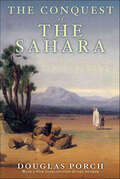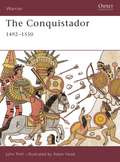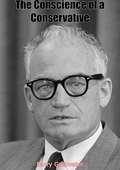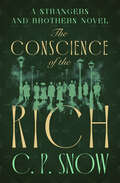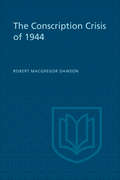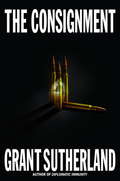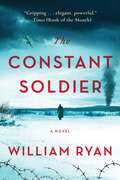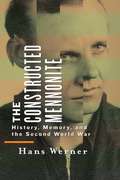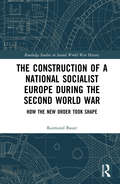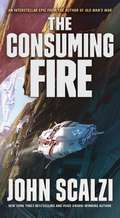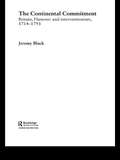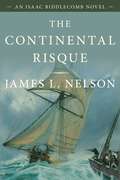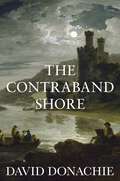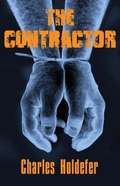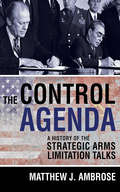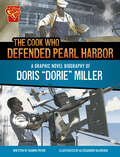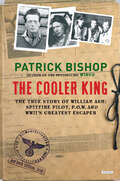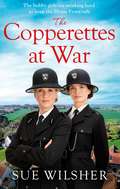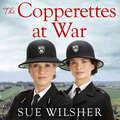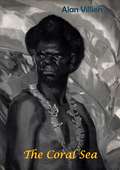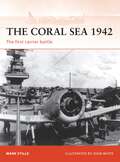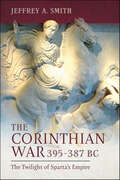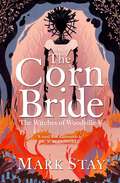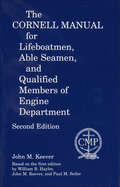- Table View
- List View
The Conquest of the Sahara: A History
by Douglas PorchIn The Conquest of the Sahara, Douglas Porch tells the story of France's struggle to explore and dominate the great African desert at the turn of the century. Focusing on the conquest of the Ahaggar Tuareg, a Berber people living in a mountain area in central Sahara, he goes on to describe the bizarre exploits of the desert's explorers and conquerors and the incompetence of the French military establishment. Porch summons up a world of oases, desert forts and cafés where customers paid the dancer by licking a one-franc piece and sticking it on her forehead.The Conquest of the Sahara reveals the dark side of France's "civilizing mission" into this vast terrain, and at the same time, weaves a rich tale of extravagant hopes, genius and foolhardiness.
The Conquistador
by Adam Hook John PohlMany accounts portray the conquest of the New World as a remarkable military achievement, with Cortés' vastly outnumbered but better armed Spaniards defeating hordes of superstitious savages. However, the reality of these events is far more complex and no less significant. The first Conquistadors who had sailed in search of prosperity, inspired by dreams of unlimited riches, soon became disillusioned and restless. With disease rampant, resources exhausted, and the Caribbean populations dwindling, they had little alternative but to find new territories and peoples to exploit. This title shows how, bolstered by influxes of war-hardened veterans from Europe and an army of over 30,000 allied Indian troops, they came to rely on and perfect what they knew best - killing for profit, and without mercy.
The Conscience of a Conservative (The\james Madison Library In American Politics Ser.)
by Barry GoldwaterTHE CONSCIENCE OF A CONSERVATIVE is a sensational public revelation of that which his seldom if ever disclosed—namely, the heartfelt convictions of a Washington politician.Senator Barry Goldwater is not the only member of Congress who holds these truths, but he is the only person in high public office who has frankly and publicly put all these truths together into a complete and cogent program of foreign and domestic policy.This supremely sensible and eminently courageous book will shock orthodox politicians as much as it will gratify millions of Americans who are sick and tired of political contests between meaningless equivocations and undifferentiated distinctions.The revealed conscience of this distinguished and singularly successful political Conservative will shed helpful light on the fabrication of both political platforms.More important than that is the clear warning this book sounds about impending dangers to the survival of American freedom and the action it recommends to avoid these dangers.EVERY AMERICAN WHO LOVES HIS COUNTRY SHOULD READ THIS BOOK“There is more harsh fact and hard sense in this slight book than will emerge from all of the chatter of this year’s session of Congress, this year’s campaign for the Presidency and all other offices. Whereas the rest of the tribe of professional politicians keep a respectful distance in beating about the bush of truth, Barry Goldwater, the Republican Senator from Arizona, is not afraid to pluck it up by the roots.”—George Morgenstern, Chicago Sunday Tribune
The Conscience of the Rich (The Strangers and Brothers Novels)
by C.P. SnowAn emotional gulf forms between a young Jewish barrister and his father in a &“wise, beautifully controlled and deeply moving novel&” set in prewar England (The New York Times Book Review). The scion of a wealthy Anglo-Jewish family, Charles March, is expected to fulfill the ambitions his father has for him. The young man, a friend of Lewis Eliot, shows great promise as a barrister. But an abrupt career change—and marriage to a woman deemed both unworthy and untrustworthy—drives a wedge between father and son, ultimately putting the family&’s good name at risk. &“Snow is rare among contemporary novelists in the quiet conviction with which he expresses love between brother and sister, son and father, husband and wife.&” —The New York Times Book Review &“Leisurely, intelligent and incisive.&” —Kirkus Reviews &“Together, the [Strangers and Brothers] sequence presents a vivid portrait of British academic, political and public life.&” —Jeffrey Archer, The Guardian
The Conscription Crisis of 1944
by Robert MacGregor DawsonIn the late summer of 1944 the people and Government of Canada had every reason to view with satisfaction the progress of the war and their own part in it. The landing in Normandy had been successful, the enemy was in retreat from Belgium and Holland, Germany itself had been entered. The end of hostilities in Europe seemed in sight, and the Canadian Government in October began to plan for the celebrations to take place on the day victory was announced. Suddenly this atmosphere of imminent success and relaxed tension was broken by the unexpected re-appearance of the ghost of conscription.<P><P> In mid-October Colonel Ralston, the Minister of National Defence, returned abruptly from an inspection trip overseas to report to Prime Minister King that infantry reinforcements for the units fighting in Italy and Northwest Europe were an acute problem and that there seemed no hope of increasing them to the required numbers in the required time. Many, from the Minister himself down, felt that the manpower pools could only be filled by immediate conscription from overseas service of men already called up for home defence under the National Resources Mobilization Act. The Government of Canada was thus confronted with a crisis of the first magnitude, which brought with it the threat of a schism that would cripple the war effort and set people against people, province against province for many years to come.<P> This book provides an engrossing account of how between mid-October and mid-November this crisis was faced and resolved. Professor Dawson is keenly aware of the drama in the clash of personalities, of political views, of beliefs and conducts the eagerly following reader day by day through absorbing events and discussions to the morning of November 22 when Prime Minister King decided on the Order-in-Council drafting 16,000 men. The moment of solution was a historic one: conscription had been put forward by the majority in such a fashion that the minority could accept it, if not with enthusiasm, at least with substantial goodwill. The contrast with 1917 was inescapable.<P> Professor Dawson has given a brilliant essays on the relation of political decision to popular consent in a democracy and it will attract and hold the attention of everyone interested in the arts of government.
The Consignment: A Novel
by Grant SutherlandWith Diplomatic Immunity, Grant Sutherland exploded onto the literary scene as one of the most original new authors of international suspense. Now, in his new novel of conspiracy, conscience, and terrifying deception--a novel stretching from the upheaval of the Gulf War to the inner secrets of the current Pentagon--a desperate man struggles to survive a battle for the truth...a battle without any rules except one: win or die.It wasn’t just a war we were fighting out there in the Gulf; the truth is we were joined in battle against the weapons of every major arms manufacturing country on earth--including our own.Captain Ned Rourke of the U.S. Rangers always expected war to be hell, but he never imagined that his men would be cut down in the Gulf War with weapons created by his own country. Disillusioned, betrayed, and looking for justice, he’s determined to find those responsible and make them pay the price. But to do so, he’ll have to work undercover as a marketing manager for Haplon Systems, an arms trader skirting the decrees of international law. Forced to live a double life, Rourke knows he is risking something more important than justice: the trust of his wife and son. And when his friend Dimitri Spandos, a former West Point classmate now working for Haplon’s biggest competitor, is discovered shot to death at an arms fair, Rourke knows that he’s entered a world as dangerous as any battlefield. Haplon’s latest deal--to ship a massive quantity of arms to an unnamed African country--is clearly worth killing for, but can Rourke discover who’s really behind it before his marriage is destroyed...and he ends up with a bullet in the head?The more Rourke learns, the closer he gets to a conspiracy reaching from the killing fields of West Africa to the upper echelons of the Pentagon, and a deadly cover-up that someone intended Dimitri Spandos to take to his grave. But Rourke is now fighting in a war where an ally can become an enemy in the blink of an eye, where no flags or uniforms mark sides--and where knowing the truth could be a sentence of death. If he and his family are going to survive, he’s going to have to throw away the rule book, put his principles aside, and prepare to get blood on his hands once again.
The Constant Soldier: A Novel
by William RyanSet near the concentration camps of Auschwitz, an accaimed historical thriller of the end of World War II that has been called &“A masterpiece of empathetic imagination and storytelling flair&” (BBC History Magazine, &“Historical Novel of the Year&”) 1944. Paul Brandt, a soldier in the German army, returns wounded and ashamed from the bloody chaos of the Eastern Front to find his village changed and in the dark shadow of an SS rest hut—a luxurious retreat for officers recuperating from their injuries and for those who manage the nearby concentration camps of Auschwitz. The hut is run with the help of a small group of female prisoners from the camps who, against all odds, have survived the war so far. When, by chance, Brandt glimpses one of these prisoners, he realizes he must find a way to access the hut. For inside is the woman to whom his fate has been tied since their arrest five years earlier, and now he must do all he can to protect her. As the Russian offensive moves closer and partisans press from the surrounding woodlands, the days of this rest hut and its SS inhabitants are numbered. And while hope for Brandt and the female prisoners grows tantalizingly close, the danger is greater than ever. In a forest to the east, a young female Soviet tank driver awaits her orders to advance . . .The Constant Soldier has been hauled as &“a masterpiece&” and &“a modern classic&” and praised on its UK publication as &“An extraordinary novel, with the intensity and pace of a thriller and a wisdom and subtlety all of its own. I was gripped to the very last page&” (Antonia Hodgson).
The Constructed Mennonite: History, Memory, and the Second World War
by Hans WernerJohn Werner was a storyteller. A Mennonite immigrant in southern Manitoba, he captivated his audiences with tales of adventure and perseverance. With every telling he constructed and reconstructed the memories of his life. John Werner was a survivor. Born in the Soviet Union just after the Bolshevik Revolution, he was named Hans and grew up in a German-speaking Mennonite community in Siberia. As a young man in Stalinist Russia, he became Ivan and fought as a Red Army soldier in the Second World War. Captured by Germans, he was resettled in occupied Poland where he became Johann, was naturalized and drafted into Hitler’s German army where he served until captured and placed in an American POW camp. He was eventually released and then immigrated to Canada where he became John. The Constructed Mennonite is a unique account of a life shaped by Stalinism, Nazism, migration, famine, and war. It investigates the tenuous spaces where individual experiences inform and become public history; it studies the ways in which memory shapes identity, and reveals how context and audience shape autobiographical narratives.
The Construction of a National Socialist Europe during the Second World War: How the New Order Took Shape (Routledge Studies in Second World War History)
by Raimund BauerThroughout the Second World War, the term ‘Europe’ featured prominently in National Socialist rhetoric. This book reconstructs what Europe stood for in National Socialist Germany, analyses how the interplay of its defining elements changed dependent on the war, and shows that the new European order was neither an empty phrase born out of propaganda, nor was it anti-European. Tying in with long-standing traditions of German European, völkisch, and economic thinking, imaginations of a New Order became a central category in contemporary political and economic decision-making processes, justifying cooperation as well as exploitation, violence, and murder.
The Consuming Fire (The Interdependency #2)
by John ScalziNew York Times Best SellerUSA Today Best Sellerio9's New Sci-Fi and Fantasy Books You Need to Put On Your Radar This FallKirkus' SF/F Books to Watch Out for in 2018Popular Mechanics Best Books of 2018 (So Far)Goodreads' Most Anticipated Fantasy and Science Fiction BooksThe Consuming Fire—the New York Times and USA Today bestselling sequel to the 2018 Hugo Award Best Novel finalist and 2018 Locus Award-winning The Collapsing Empire—an epic space-opera novel in the bestselling Interdependency series, from the Hugo Award-winning and New York Times bestselling author John ScalziThe Interdependency—humanity’s interstellar empire—is on the verge of collapse. The extra-dimensional conduit that makes travel between the stars possible is disappearing, leaving entire systems and human civilizations stranded. Emperox Grayland II of the Interdependency is ready to take desperate measures to help ensure the survival of billions. But arrayed before her are those who believe the collapse of the Flow is a myth—or at the very least an opportunity to an ascension to power. While Grayland prepares for disaster, others are prepare for a civil war. A war that will take place in the halls of power, the markets of business and the altars of worship as much as it will between spaceships and battlefields. The Emperox and her allies are smart and resourceful, as are her enemies. Nothing about this will be easy... and all of humanity will be caught in its consuming fire.The Interdependency Series1. The Collapsing Empire2. The Consuming FireAt the Publisher's request, this title is being sold without Digital Rights Management Software (DRM) applied.
The Container Victory Garden: A Beginner’s Guide to Growing Your Own Groceries
by Maggie StuckeyEven if all you have is a postage stamp's worth of space on a balcony, patio, or front stoop, The Container Victory Garden equips you to dig into the joys of container gardening, right where you are.Imagine this: In the morning, you pluck a few mint leaves from your backdoor herb garden and add them to your tea. A few hours later, you step out onto your patio and collect a handful of lettuce leaves for your lunch salad. Just before dinner, you harvest a few basil leaves and cherry tomatoes for a delicious caprese pasta.In her trademark warm and informative style, bestselling author and expert gardener Maggie Stuckey shares everything you need to know to succeed with container gardening: planning, gearing up, planting, nurturing, and harvesting.In The Container Victory Garden, you will find:detailed line art drawings that illustrate many gardening techniques and set-upsfirst-person stories of World War II Victory Gardens and their inspiration for today's gardenersbeautiful full-color paintings of diverse people enjoying their container gardensThis is the promise of container gardening: a fresh bounty of vegetables, herbs, and edible flowers you can enjoy in every season.
The Continental Commitment: Britain, Hanover and Interventionism 1714-1793
by Jeremy BlackRecent debates about British political and military strategies, derived in particular from dissension about Britain’s relationship with Europe and from disagreement over the Iraq war, has led to a greater awareness of the problematic nature of the concept of ‘national interests’. This major new work delivers a long view of this issue, its twin strands are captured by an assessment both of the Continental commitment and British interventionism in the 18th Century. The extent to which Britain’s rise to superpower status in America and Asia was related to the Continental connection, and her Hanoverian interests, is a central theme of this study, as is the relationship between the domestic position of the Crown and its interests as Electors of Hanover. The issue of Continental interventionism opens up the question of how alliances generate their own pressures, at the same time that they are supposed to help overcome challenges; while also indicating how the domestic support for alliances shifts, creating its own dynamics that in turn affect the international dimension. This book will be of great interest to students and scholars of international relations, British foreign policy, British history and war and conflict studies.
The Continental Risque: An Isaac Biddlecomb Novel (Isaac Biddlecomb Novels)
by James L. NelsonNelson's exciting seafaring series continues. As cries for independence ring through the chambers of the Second Continental Congress, Captain Isaac Biddlecomb and his crew are called upon to engage the Royal Navy.Isaac Biddlecomb, now captain of the converted merchantman Charlemagne, a newly commissioned brig-of-war in the Continental Navy of 1776, is being pursued by his archenemy, HMS Glasgow. Through a series of clever yachting maneuvers, Biddlecomb eludes the larger enemy ship, impresses the love of his life, Virginia Stanton, daughter of his old mentor, and makes himself a hero. After a brief and somewhat tedious stay on shore—during which the reader is treated to cameos of Samuel Adams, Benjamin Franklin, and other founding fathers—the captain and his ship join the fledgling Continental fleet and the salt breeze invigorates Nelson's tale as his hero sails through various adventures in the Bahamas.
The Contraband Shore (The Contraband Shore)
by David DonachieThe first volume in The Contraband Shore trilogy.1787: Captain Edward Brazier is on a mission. Recently paid off from his frigate and comfortable with prize money, he is headed to Deal to propose marriage to the lovely young widow Betsey Langridge. And while there, he must navigate the bustle of the town&’s narrow streets busy with illicit and depraved business flowing from and around the ships at anchor.But all does not go well; between Betsey&’s brother and guardian, Henry Tulkington, prohibiting the match and Brazier being marked out for trouble by a local smuggling gang, his plans are in disarray. And when it slowly emerges that there may have been a decades-old injustice closer to home, Brazier is caught up in more than he&’d bargained for.
The Contractor
by Charles HoldeferGeorge Young, accepts work as a contracted civilian interrogator for the U.S. government. Soon he's overseas at a secret holding facility for suspected terrorists, a place called Omega.
The Control Agenda: A History of the Strategic Arms Limitation Talks
by Matthew J. AmbroseThe Control Agenda is a sweeping account of the history of the Strategic Arms Limitation Talks (SALT), their rise in the Nixon and Ford administrations, their downfall under President Carter, and their powerful legacies in the Reagan years and beyond.Matthew Ambrose pays close attention to the interplay of diplomacy, domestic politics, and technology, and finds that the SALT process was a key point of reference for arguments regarding all forms of Cold War decision making. Ambrose argues elite U.S. decision makers used SALT to better manage their restive domestic populations and to exert greater control over the shape, structure, and direction of their nuclear arsenals.Ambrose also asserts that prolonged engagement with arms control issues introduced dynamic effects into nuclear policy. Arms control considerations came to influence most areas of defense decision making, while the measure of stability SALT provided allowed the examination of new and potentially dangerous nuclear doctrines. The Control Agenda makes clear that verification and compliance concerns by the United States prompted continuous reassessments of Soviet capabilities and intentions; assessments that later undergirded key U.S. policy changes toward the Soviet Union. Through SALT’s many twists and turns, accusations and countercharges, secret backchannels and propaganda campaigns the specter of nuclear conflict loomed large.
The Cook Who Defended Pearl Harbor: A Graphic Novel Biography of Doris "Dorie" Miller (Barrier Breakers)
by Shawn PryorA nonfiction graphic novel about Dorie Miller, a Navy cook who shot down enemy planes during the attack on Pearl Harbor on December 7, 1941, saving countless lives.
The Cooler King: The True Story of William Ash, the Greatest Escaper of World War II
by Patrick BishopThe true story of William Ash: Spitfire Pilot, P.O.W. and WWII's Greatest Escaper When American fighter pilot William Ash’s plane was shot down over France in 1942, he was captured by German forces and placed in a Nazi prison camp. Ash, bolstered by the grit and ingenuity he developed during his upbringing in Texas during the Great Depression, would spend the rest of the war defying the Nazis and striving to escape from every POW camp in which they incarcerated him. His thrilling exploits made him the inspiration for Steve McQueen's character in The Great Escape. Ash’s is a saga full of incident and high drama, climaxing in a breakout through a tunnel dug in the latrines of the Oflag XXIB prison camp in Poland—a great untold episode of World War II. Alongside William Ash is a cast of fascinating characters, including Roger Bushell, who would go on to lead the Great Escape, and Paddy Barthropp, a dashing Battle of Britain pilot who became Ash’s best friend and shared many of his adventures. The Cooler King is the uplifting story of one man’s extraordinary resilience in the face of impossible odds, and stands as an inspirational testament to the invincible spirit of liberty.
The Copperettes at War: A heart-warming First World War saga about love, loss and friendship
by Sue WilsherThe BRAND NEW wartime saga from the much-loved author of THE TILBURY POPPIES. Perfect for fans of Annie Murray and Donna DouglasThe war is over, but their friendship has just begun . . .Essex, 1918Working at the local munitions factory has given Aggie the freedom she's long desired. But the Great War is coming to an end, and the men are coming home. Determined to hold on to her new-found independence, Aggie decides to join the Women's Police Service and become a Copperette.Like Aggie, Mim wants nothing more than to do her bit for her country. Never one to shy away from hard work, she's eager to help her fellow women and keep up morale - even if that does mean opening her home to Aggie and helping her train.With the last days of war upon them, Aggie and Mim face shocking loss. But in the face of great hardship, can they find a way to work together?A heart-warming story of love, loss and friendship, set against the backdrop of wartime EnglandREAL READERS love Sue Wilsher's novels:'I loved reading about the wartime challenges Mim and Aggie faced - a great combination of historical fact, emotion and grit. I couldn't put it down''Another brilliant book from Sue Wilsher bringing history alive. Unforgettable characters and great storytelling'Brilliant book . . . the third one I've read by this author and I can't fault it at all - would highly recommend''A great story with local interest for anyone who knows Thurrock. A tribute to those who lived through that time and endured so much'
The Copperettes at War: A heart-warming First World War saga about love, loss and friendship
by Sue WilsherThe BRAND NEW wartime saga from the much-loved author of THE TILBURY POPPIES. Perfect for fans of Annie Murray and Donna DouglasThe war is over, but their friendship has just begun . . .Essex, 1918Working at the local munitions factory has given Aggie the freedom she's long desired. But the Great War is coming to an end, and the men are coming home. Determined to hold on to her new-found independence, Aggie decides to join the Women's Police Service and become a Copperette.Like Aggie, Mim wants nothing more than to do her bit for her country. Never one to shy away from hard work, she's eager to help her fellow women and keep up morale - even if that does mean opening her home to Aggie and helping her train.With the last days of war upon them, Aggie and Mim face shocking loss. But in the face of great hardship, can they find a way to work together?A heart-warming story of love, loss and friendship, set against the backdrop of wartime EnglandREAL READERS love Sue Wilsher's novels:'I loved reading about the wartime challenges Mim and Aggie faced - a great combination of historical fact, emotion and grit. I couldn't put it down''Another brilliant book from Sue Wilsher bringing history alive. Unforgettable characters and great storytelling'Brilliant book . . . the third one I've read by this author and I can't fault it at all - would highly recommend''A great story with local interest for anyone who knows Thurrock. A tribute to those who lived through that time and endured so much'
The Coral Sea
by Alan VilliersThe Coral Sea is a history of explorations, outlaws, desperados, runaway whalemen, beachcombers, treacherous wooders, blackbirders and missionaries.Contains maps drawn by Stephen J. Voorhies and numerous historic photographs, accompanying those of the author.
The Coral Sea 1942
by John White Mark StilleOsprey's study of the Battle of the Coral Sea of World War II (1939-1945), which is unique in the annals of naval history. It is the first battle in which enemy fleets never came within sight of one another. Instead, aircraft launched from carrier decks were sent out to attack the enemy with bombs and torpedoes. In May of 1942, the Japanese fleet moved on Port Moresby, the last Allied base between Australia and Japan. Forced to respond, the Americans sent two aircraft carriers to protect the base. In the ensuing battle, one American carrier was destroyed and the other severely damaged. However, the Japanese also lost a carrier and decided to withdraw. Although bloody, it proved to be an important strategic victory for the Allies as the Japanese were forced to attempt future attacks on Port Moresby over land. Using the latest research and numerous period photographs, retired USN Commander Mark O. Stille tells the story of this important and unique battle in the Pacific War.
The Corinthian War, 395–387 BC: The Twilight of Sparta's Empire
by Jeffrey SmithNarrates and analyzes an oft-neglected war between Sparta and an unlikely alliance of Athens, Persia, Thebes, Corinth and Argos all while including detailed analysis of the battles of Haliartus, Nemea, Cnidus, Coronea and Lechaeum. At the end of the Peloponnesian War in 404 BC, Sparta reigned supreme in Greece. Having vanquished their rival Athens and quickly dismantled the wealthy and powerful Athenian Empire, Sparta set its sights on dominating the Mediterranean world and had begun a successful invasion of the vast Persian Empire under their legendary king Agesilaus II. But with their victory over Athens came the inheritance of governing Athens’s empire - and Sparta desperately lacked both a cogent vision of empire and the essential economic and trade infrastructure to survive in the role of hegemon. Sparta’s overextension of empire compounded with internal political conflict to antagonize the rest of Greece with heavy-fisted and uneven interventionism. Soon the unlikely confederacy of Athens, Corinth, Thebes, Argos, and Persia united against Sparta in a war that, despite a Spartan victory, had devastating ramifications for their empire. The Corinthian War (395 - 387 BC) was a fascinating entanglement of clashing empires, complex diplomatic alliances and betrayals, and political fissures erupting after centuries of tension. Situated between the great Peloponnesian War and the Theban-Spartan War, the Corinthian War is often overlooked or understood as an aftershock of the civil war Greece had just endured. But the Corinthian War was instead a seminal conflict that reshaped the Greek world, illustrating the limits of Sparta’s newfound imperial experiment as they grappled with their own internal cultural conflicts and charted the rise - and fall - of their newfound hegemony and the future of Greece.
The Corn Bride: The witchiest, ghostliest, most hilarious folk-horror wartime romance you'll read this year . . . or ever
by Mark Stay&‘A rural Ben Aaronovitch!&’ C. K. McDonnell &‘Fast-paced, entertainingly creepy, laugh-out-loud funny, and genuinely moving&’ Michelle Paver Dear reader, you are cordially invited to the strangest wedding of the year . . . It&’s May 1941, and the war is in full swing. Yet in the quiet village of Woodville in rural Kent a happy event is on the horizon, as Faye Bright interrupts her training with the British Secret Service to return home and marry her true love, Bertie. But as preparations get underway, a ghostly premonition throws a spanner in the works. Who is the Corn Bride, and is her burning visage a warning, or a threat to the happiest day of Faye&’s life? As Faye and the witches investigate, it&’s soon apparent that there&’s much more on the line than dress fittings, cake and Bertie&’s stag do. For an old enemy is stirring in the shadows, bent on vengeance. And he&’s not above crashing a wedding to get it. Will the happy couple make it to the church on time? Or, after all she&’s survived, could it be getting hitched that finally spells Faye&’s doom?Embark upon an adventure that weaves together romance, undead Nazis, pensioner spies, spectral schoolchildren and a talking budgerigar, and still somehow manages to prove that love is the most powerful magic of all. For fans of Lev Grossman and Terry Pratchett comes the fifth novel in this delightful series of war, mystery and a little bit of magic . . . Don&’t miss the other magical books in the WITCHES OF WOODVILLE series! #1 The Crow Folk #2 Babes in the Wood #3 The Ghost of Ivy Barn #4 The Holly King
The Cornell Manual for Lifeboatmen, Able Seamen, and Qualified Members of Engine Department
by John M. KeeverThe Cornell Manual was first published in 1984 to replace CG-176, a small handbook issued by the U.S. Coast Guard. Over the last two decades it has become a standard manual for those who choose to follow the sea and who want to prepare themselves for the Coast Guard examinations. The second edition of the manual has been updated to reflect current information and procedures, and includes for the various rating requirements for documents. The Cornell Manual describes safety practices--lifeboat operation, survival procedures, rescue and evacuation details, firefighting, and first aid--that should be understood by all mariners. Of particular value are the sample multiple-choice questions and answers for both the lifeboatman and able seaman Coast Guard examinations.
